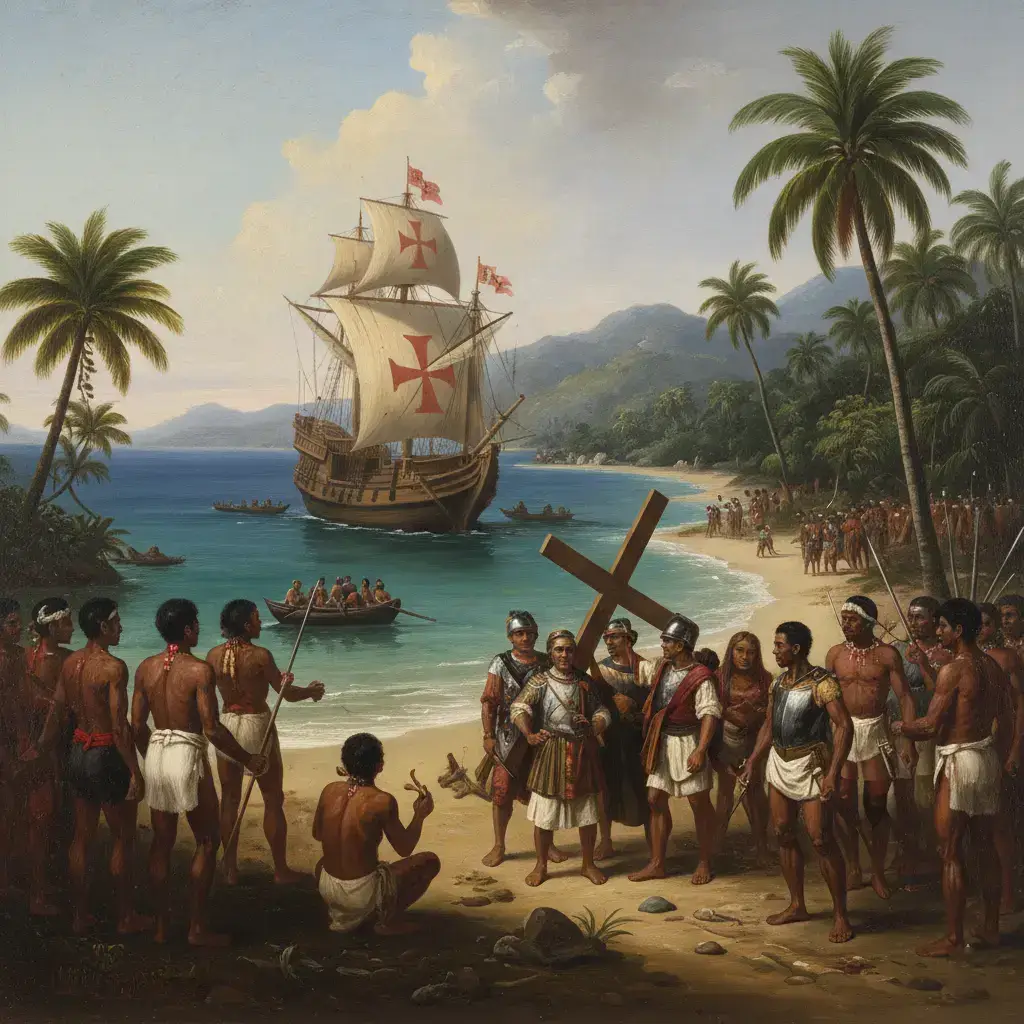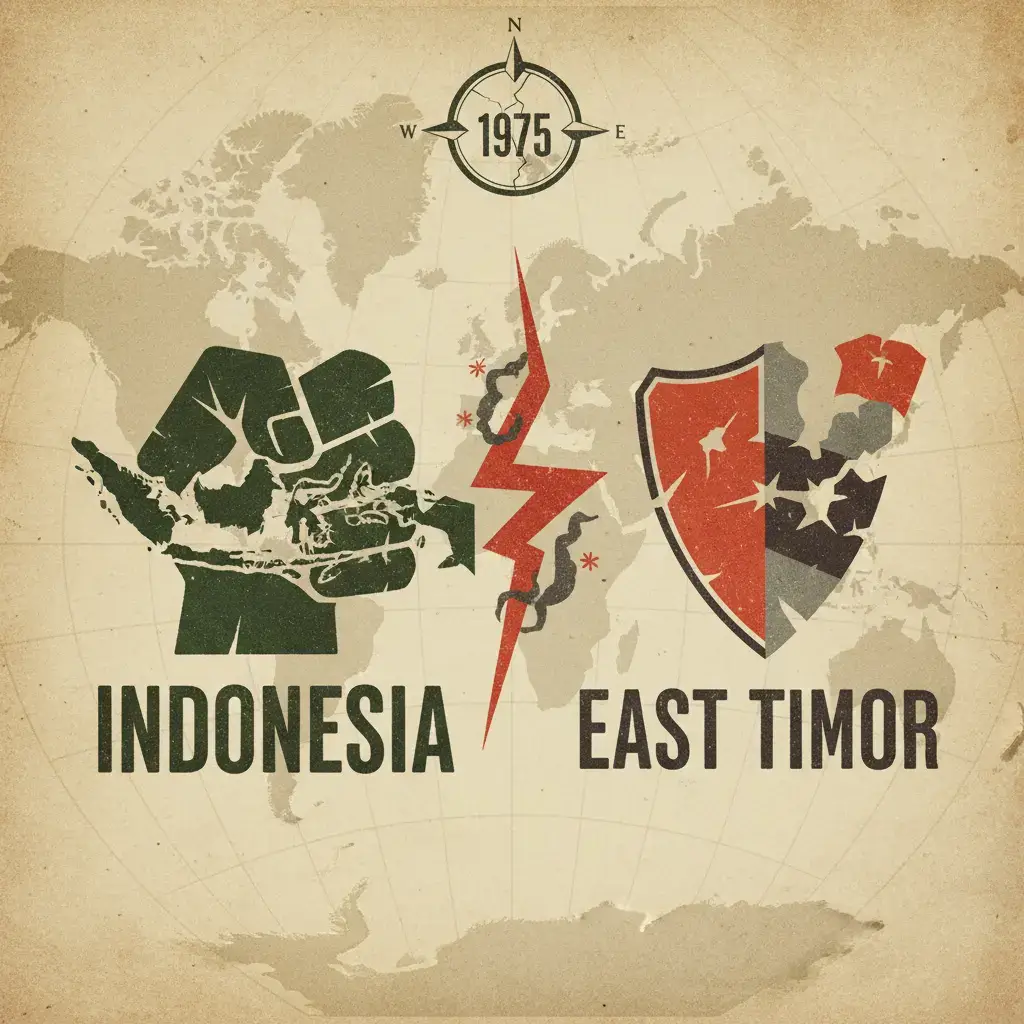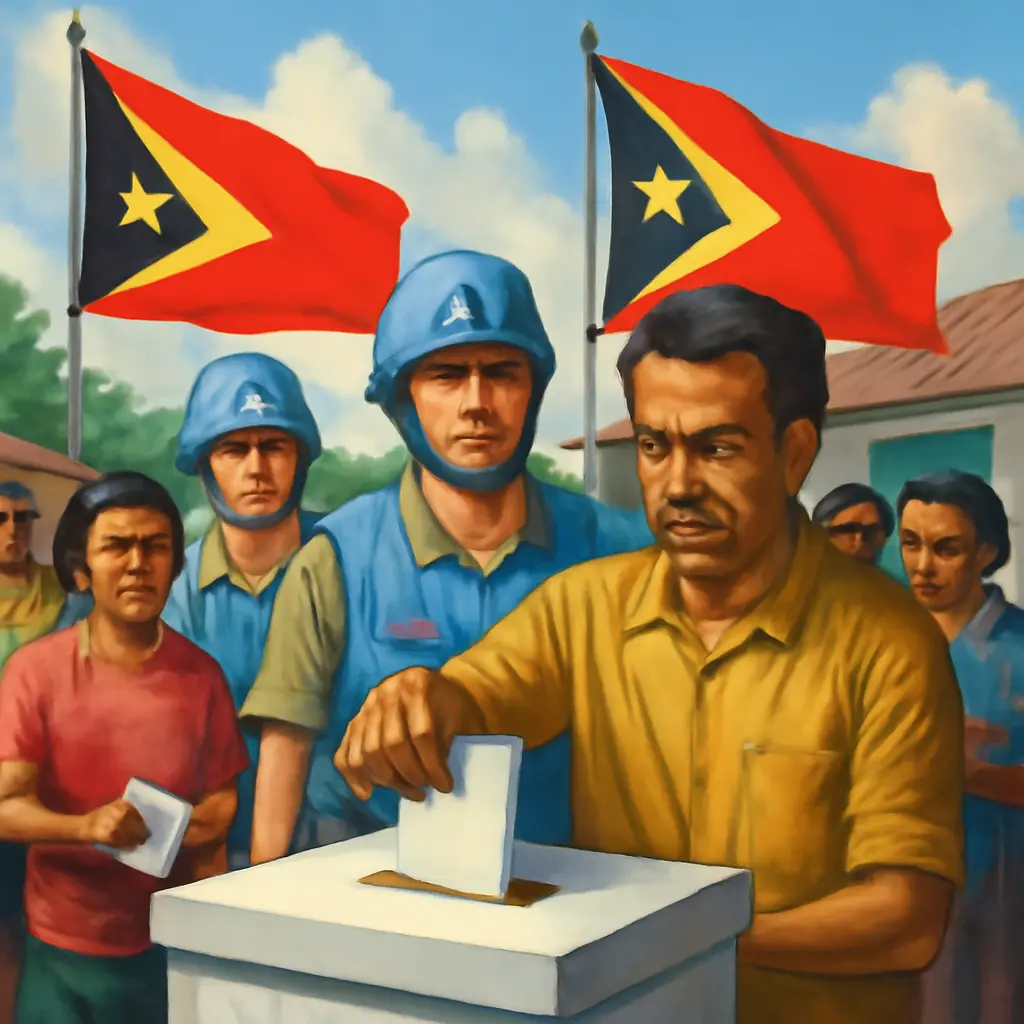Timor-Leste’s history is a unique blend of ancient legends and modern events. Its story begins with a myth about a crocodile that became an island and continues through centuries of foreign rule, a long fight for freedom, a historic vote in 1999, and finally, its independence in 2002.
The Legend of the Crocodile
A popular origin story in Timor-Leste is about a boy who befriends a small crocodile. In return for the boy’s kindness, the grown crocodile carries him on its back across the ocean. When the crocodile becomes old and tired, it transforms into the island of Timor, and its ridged back becomes the country’s mountains. This tale, known as Lafaek Diak or “the Good Crocodile,” teaches the importance of gratitude and mutual respect, which are core values in Timorese culture.
Culture and Beliefs of Timor Leste
Crocodiles are considered sacred animals and are respectfully called Avo Lafaek, which means “Grandfather Crocodile.” They are seen as ancestors, and this belief shapes local customs and rituals, especially concerning safety near water. Before outsiders arrived, Timor’s people had rich traditions, many languages, and sacred houses called Uma Lulik that served as the center of community life. Today, Catholicism, introduced by the Portuguese, is also a major part of the national identity and often exists alongside these ancient beliefs.
Colonial Rule and Occupation
The Portuguese arrived in the 16th century, and their influence grew over hundreds of years. They established the Catholic Church and a colonial government. In 1974, after a revolution in Portugal, the Portuguese left Timor-Leste. The country declared its independence on November 28, 1975. However, just nine days later, Indonesia invaded and, in 1976, made the territory its province. This began a 24-year occupation marked by armed resistance, severe hardship, and human rights violations.
The Path to Independence
A turning point came on November 12, 1991, when Indonesian soldiers fired on a peaceful procession at the Santa Cruz cemetery in Dili. The event was filmed and broadcast worldwide, bringing international attention to the situation in Timor-Leste. This global pressure helped lead to a United Nations-supervised vote on August 30, 1999. In that vote, 78.5% of the Timorese people chose independence. Though the vote was followed by a wave of violence from anti-independence militias, international peacekeepers intervened to restore order.
A Brief Timeline

The Portuguese arrive and begin to establish their influence

Timor-Leste declares independence from Portugal

Indonesia invades the territory

The Santa Cruz massacre brings global attention to the occupation

The people vote overwhelmingly for independence in a UN-backed referendum

Timor-Leste officially becomes an independent nation
An Independent Nation

Government and Language: The country has established its own constitution and government. Portuguese and Tetum are the official languages, connecting its colonial history with its local identity.
Economy: Timor-Leste has relied on revenue from oil and gas in the Timor Sea to fund public services. Now, it is working to diversify its economy by developing sectors like agriculture, fishing, and tourism.
- Challenges: Key priorities for the future include creating jobs for young people, improving education, and protecting its coastlines from the effects of climate change.
Frequently Asked Questions
Crocodiles are seen as sacred ancestors based on the nation's origin myth about a crocodile that became the island. They are part of the country's cultural identity and are treated with great respect.
The 1999 vote was a referendum where the people of Timor-Leste decided between becoming independent or remaining part of Indonesia. They chose independence by a large majority.
It officially became an independent country on May 20, 2002, after a period of UN administration.
The Portuguese ruled for several centuries, leaving a lasting impact on the country's religion (Catholicism) and one of its official languages (Portuguese).










